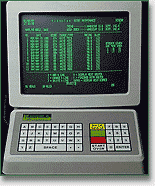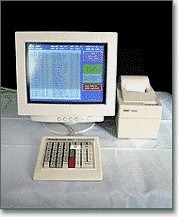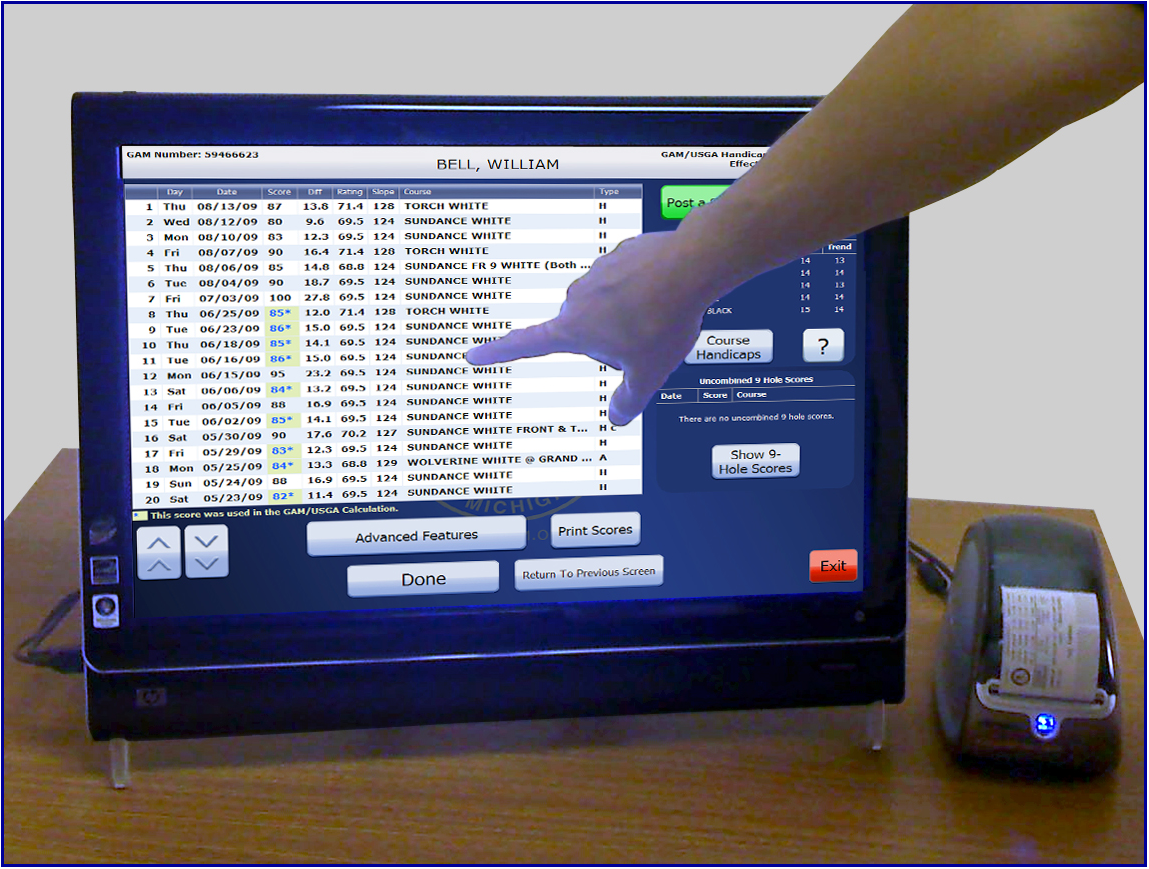 |
1968 - 2024 Celebrating 56 Years!
|
Golf Handicap Network History
Handicomp was founded in 1968 by Jim Healey who earned his B.S. in Electrical Engineering from the University of Michigan in 1953. In the 16 years following graduation, he worked on guidance computer design on several defense and space missile programs, including POLARIS, GEMINI, and APOLLO.
Jim had a love for the game of golf since the age of 13, and consequently spent considerable time at the golf course. During his youth he was a caddie at the Country Club of Lansing in Michigan. Later in 1960, having been involved with handicap committees who had the tedious monthly chore of calculating handicaps, Jim conceived the idea of computer automated handicapping. However, it was 1967 before he decided to proceed.
 Jim designed and built the original Handicomp handicapping computer in 1967/1968 and it was first used at Clearbrook Country Club in Saugatuck, Michigan in 1968. At that time, Charlie Feeley was the PGA golf professional at the club. Jim remains extremely grateful to Charlie for that initial installation. This is believed to be the world's first micro-computer installed in a golf shop used strictly for instant handicap calculation. However, this was the only model of this computer ever built or installed. In 1969, Jim cannibalized the electronics of this computer and started the Handicomp handicap computing service.
Jim designed and built the original Handicomp handicapping computer in 1967/1968 and it was first used at Clearbrook Country Club in Saugatuck, Michigan in 1968. At that time, Charlie Feeley was the PGA golf professional at the club. Jim remains extremely grateful to Charlie for that initial installation. This is believed to be the world's first micro-computer installed in a golf shop used strictly for instant handicap calculation. However, this was the only model of this computer ever built or installed. In 1969, Jim cannibalized the electronics of this computer and started the Handicomp handicap computing service.
Essentially, the electronics were interfaced with an IBM Selectric Typewriter for printing and a Friden paper tape punch/reader for data storage. The computer had no means for internal storage except for "scratch pad" operation. Jim built three additional computers for the Handicomp service operation. While Jim was the technical force behind the company, his wife Pat was the data processing force. She was the sole data entry clerk for several years while they built a client base from scratch.
a Friden paper tape punch/reader for data storage. The computer had no means for internal storage except for "scratch pad" operation. Jim built three additional computers for the Handicomp service operation. While Jim was the technical force behind the company, his wife Pat was the data processing force. She was the sole data entry clerk for several years while they built a client base from scratch.
The 70's were years of expansion. In 1972, Handicomp entered into its first relationship with an Amateur Association, signing with the Toledo District Golf Association, and in 1974 Handicomp signed with the Golf Association of Michigan. Later in 1977 contracts were signed with the the Gulf States Section PGA and Louisiana Golf Association, and in 1978 contracts were signed with the St. Louis District Golf Association and the Gateway Section PGA. By 1978, Handicomp was servicing about 800 clubs and employing nearly a dozen people. Also, in 1978, reasonably priced micro-computers became available, and the four original "hand built" Handicomp computers were retired.
.gif) In 1981, Jim re-initiated his original dream of the on-site computer for instant handicap computations. Handicomp installed nine Tandy Model II computers in Detroit area clubs (Golf Association of Michigan member clubs), including Oakland Hills Country Club. These are believed to have been the first on-site computers installed where the clubs received computers as a result of their relationship with an amateur association.
In 1981, Jim re-initiated his original dream of the on-site computer for instant handicap computations. Handicomp installed nine Tandy Model II computers in Detroit area clubs (Golf Association of Michigan member clubs), including Oakland Hills Country Club. These are believed to have been the first on-site computers installed where the clubs received computers as a result of their relationship with an amateur association.
Beginning in 1983, Lisa Healey Postma began working full time at Handicomp in the Handicap Service Department. Lisa had been working part time during summer breaks since 1979. By 1990, Lisa had replaced Pat as the Manager of the Handicap Service Department; a position she maintains today.
In 1985, Stewart Healey began working full time at the company. Stu came into the company with a BS in Computer Science from Central Michigan University. Later he  would add an MBA from Western Michigan University. Stu began with a dual role as programmer and technical support technician, installing systems and taking questions from customers. Stu worked his way up the ladder, first as Support Department Manager and then as General Manager, in charge of all daily activities. In 1993, Stu took over as President of the company and has maintained the position ever since.
would add an MBA from Western Michigan University. Stu began with a dual role as programmer and technical support technician, installing systems and taking questions from customers. Stu worked his way up the ladder, first as Support Department Manager and then as General Manager, in charge of all daily activities. In 1993, Stu took over as President of the company and has maintained the position ever since.
Computer technology advanced rapidly during the 1980's and in 1983, Tandy / Radio Shack came out with a Xenix based computer called the Tandy 6000 that allowed for multiple workstations at a low cost. And, with the introduction of SCO-Xenix and the IBM PC-AT computer in 1985, Handicomp began installing multi-user systems in earnest. It is believed that by 1990, Michigan had more multi-user handicap system club installs than the rest of the country combined.
 With the advent of the Windows operating systems, graphics worked their way to the forefront. Handicomp followed with further revisions of its handicapping products and several iterations of a golfer entry keyboard, ranging from a flat panel design to a full key product. But, Handicomp didn't stop there. Handicomp followed with a comprehensive Touch Screen Golfer Interactive System that provided golfers access to their handicapping records for score posting and review.
With the advent of the Windows operating systems, graphics worked their way to the forefront. Handicomp followed with further revisions of its handicapping products and several iterations of a golfer entry keyboard, ranging from a flat panel design to a full key product. But, Handicomp didn't stop there. Handicomp followed with a comprehensive Touch Screen Golfer Interactive System that provided golfers access to their handicapping records for score posting and review.
In the 90’s the Internet took hold and has had a profound impact on golf handicapping. What was once the domain of clubs now could reach golfers a multitude of ways. As a result, in 2006 Handicomp began to develop the Golf Handicap Network; a 100% Internet based application that has since replaced both the original paper posting service and the distributed software application service.

In 2014 Handicomp expanded its footprint and delivered a smart phone mobile application called the Golf Mobile Network, which allows golfers to review their handicap information and post scores on their smart phones. As of today, the GMN has become the preferred method for golfers to post scores and review their handicap.
In 2017, Handicomp made a profound change to its handicap deliverable. In anticipation of the World Handicap System and the USGA taking away the ability for handicapping vendors to provide USGA/WHS Handicapping services for golf clubs, Handicomp began offering its proprietary "Handicomp Golf Handicap System" service to golfers, golf clubs and associations. The HGHS was first developed in 2006 for Handicomp's Golf League Network application and has proven its worth in the market.
.png)
However, that's not the end of the story. Handicomp continues to invest to make the HGHS the best and most accurate handicapping system in the market. In following, here in 2023 Handicomp continues to reformulate the HGHS and is confident it is the most accurate handicapping system available today.
Handicomp has been a part of many firsts and may be the old man in the market, but it continues to serve and innovate when other vendors have fallen to the side. Handicomp's Golf Handicap Network is stocked full of knowledge and experience, and it shows!
Original Sales Brochure - Circa 1968
